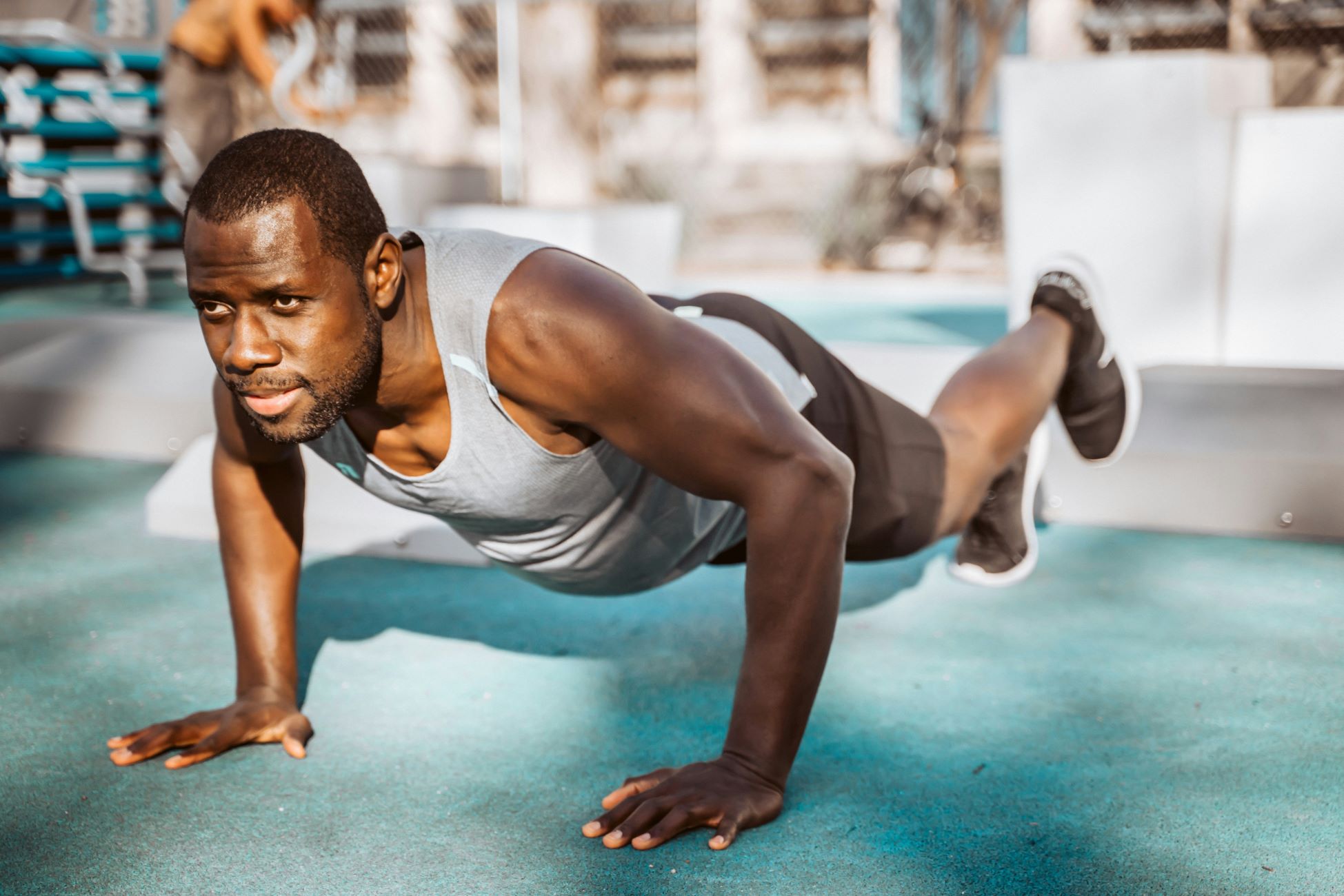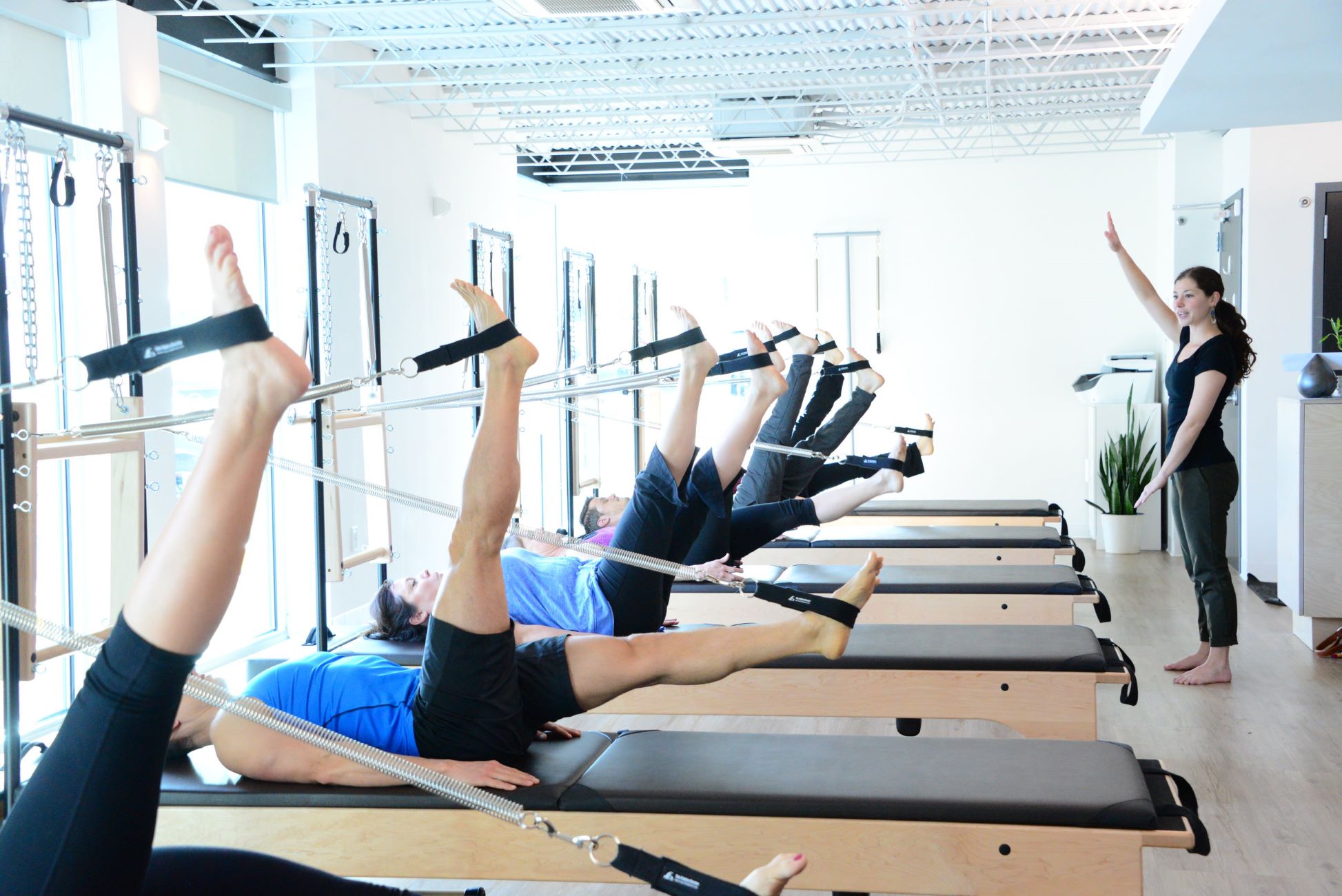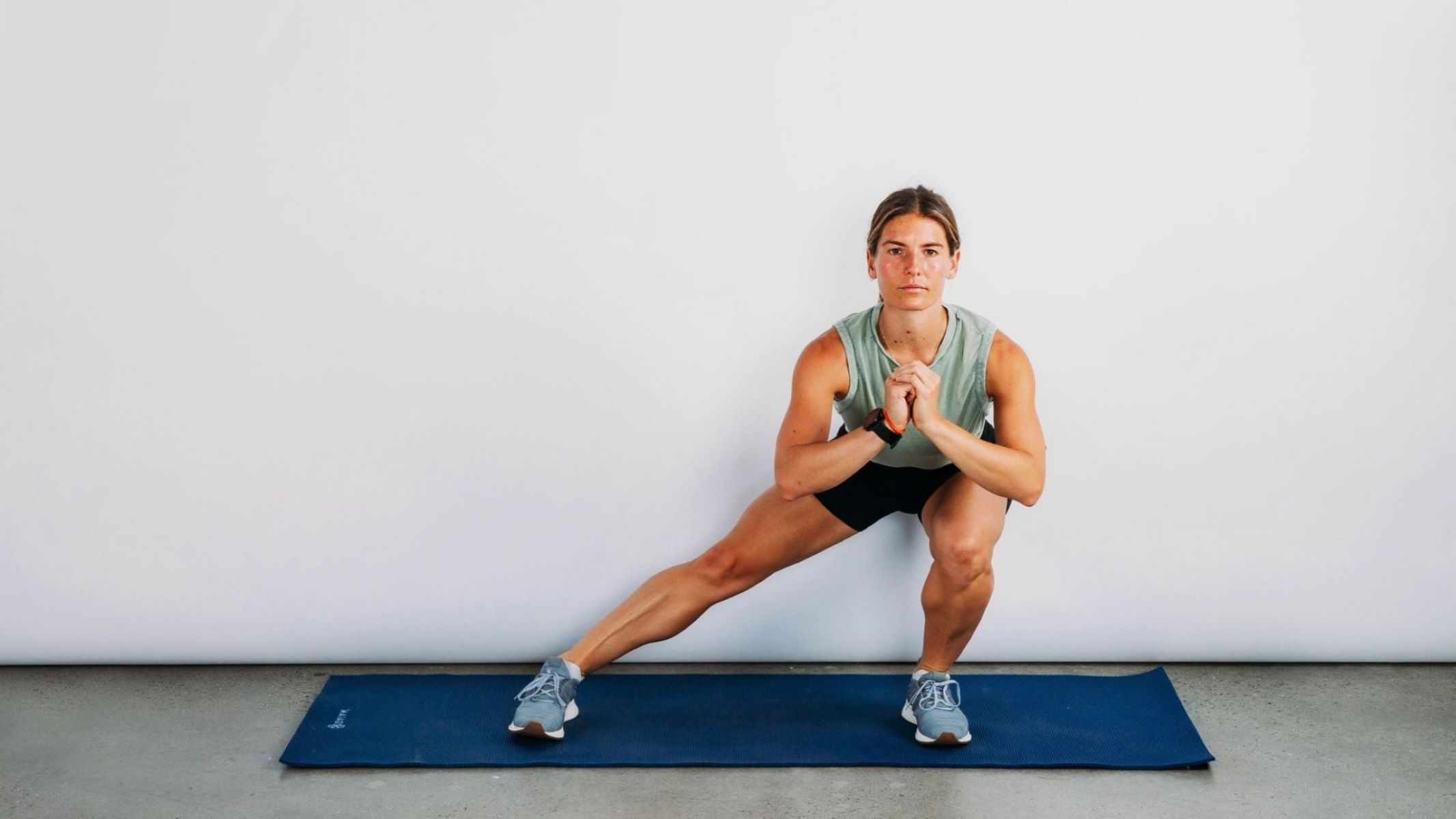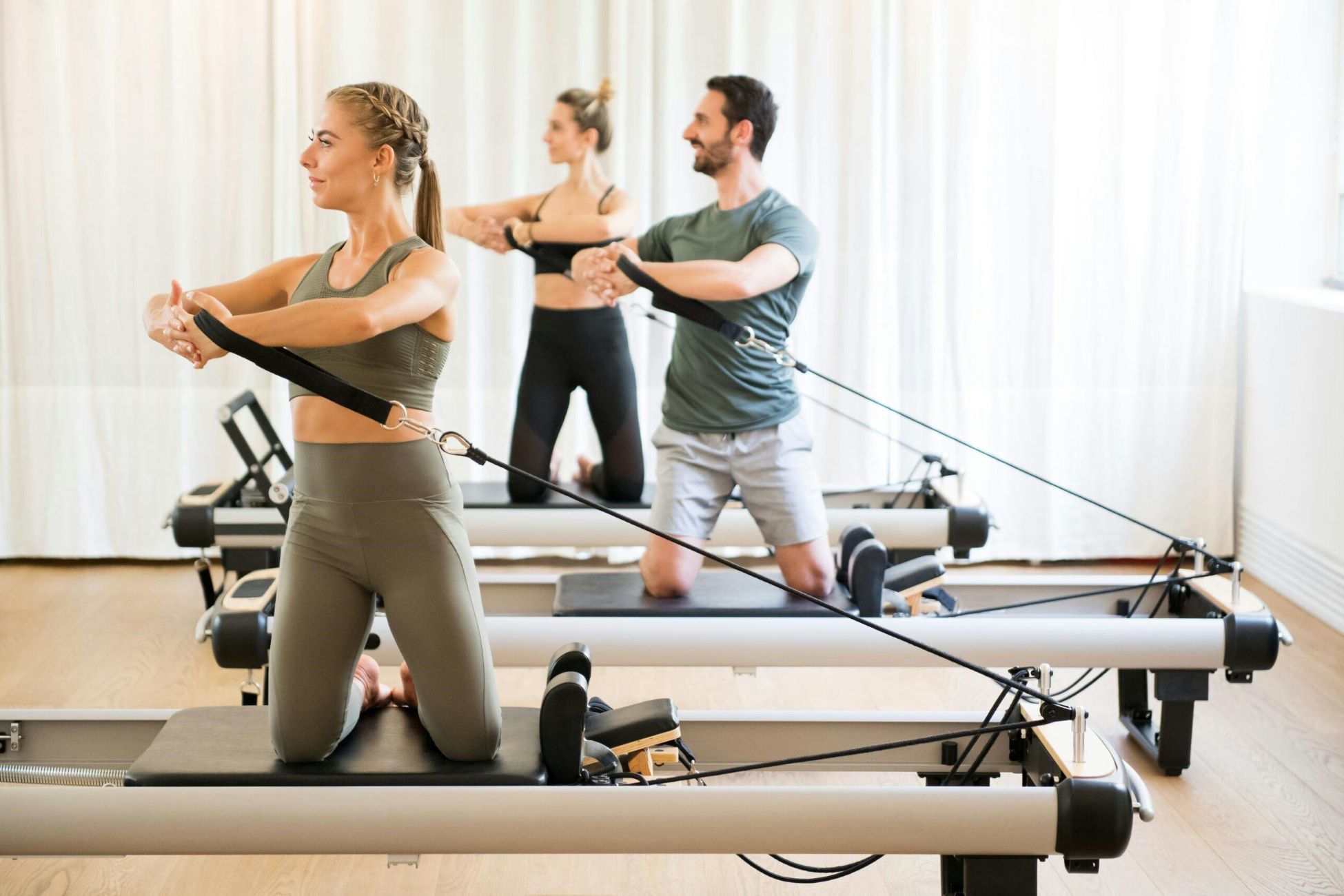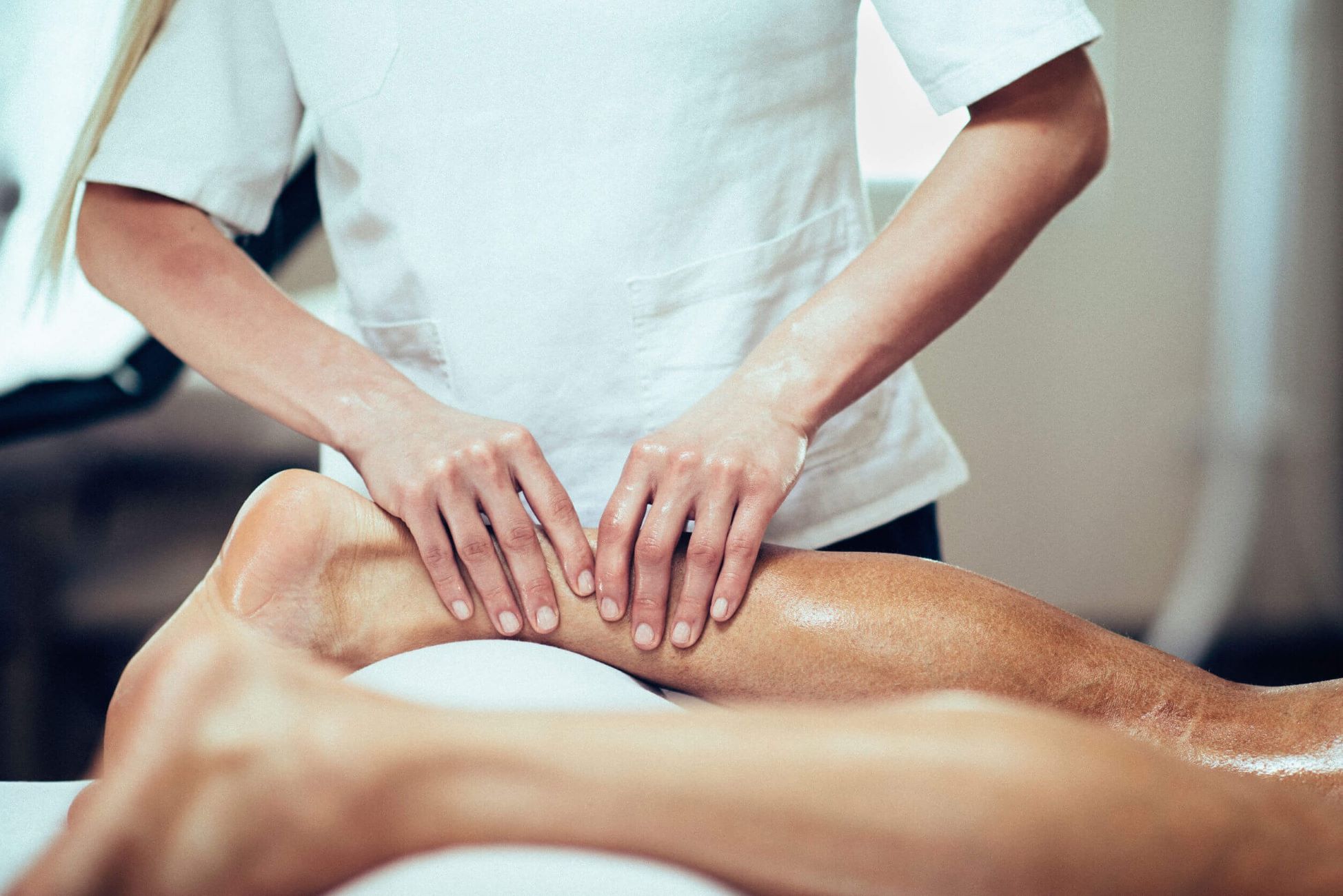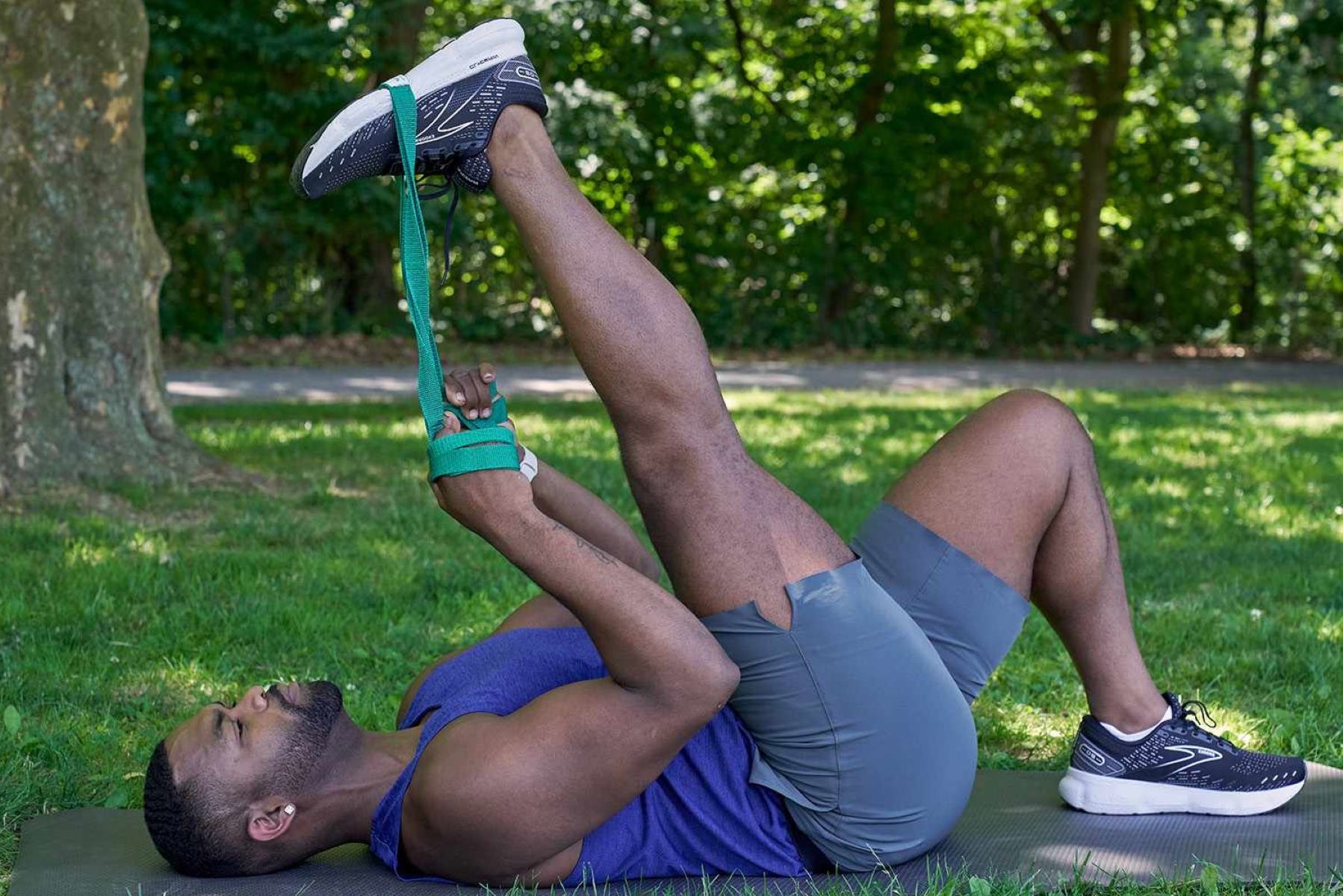Home>Health & Nutrition>Injury Prevention>The Benefits Of Side Plank For Runners: A Step-by-Step Guide
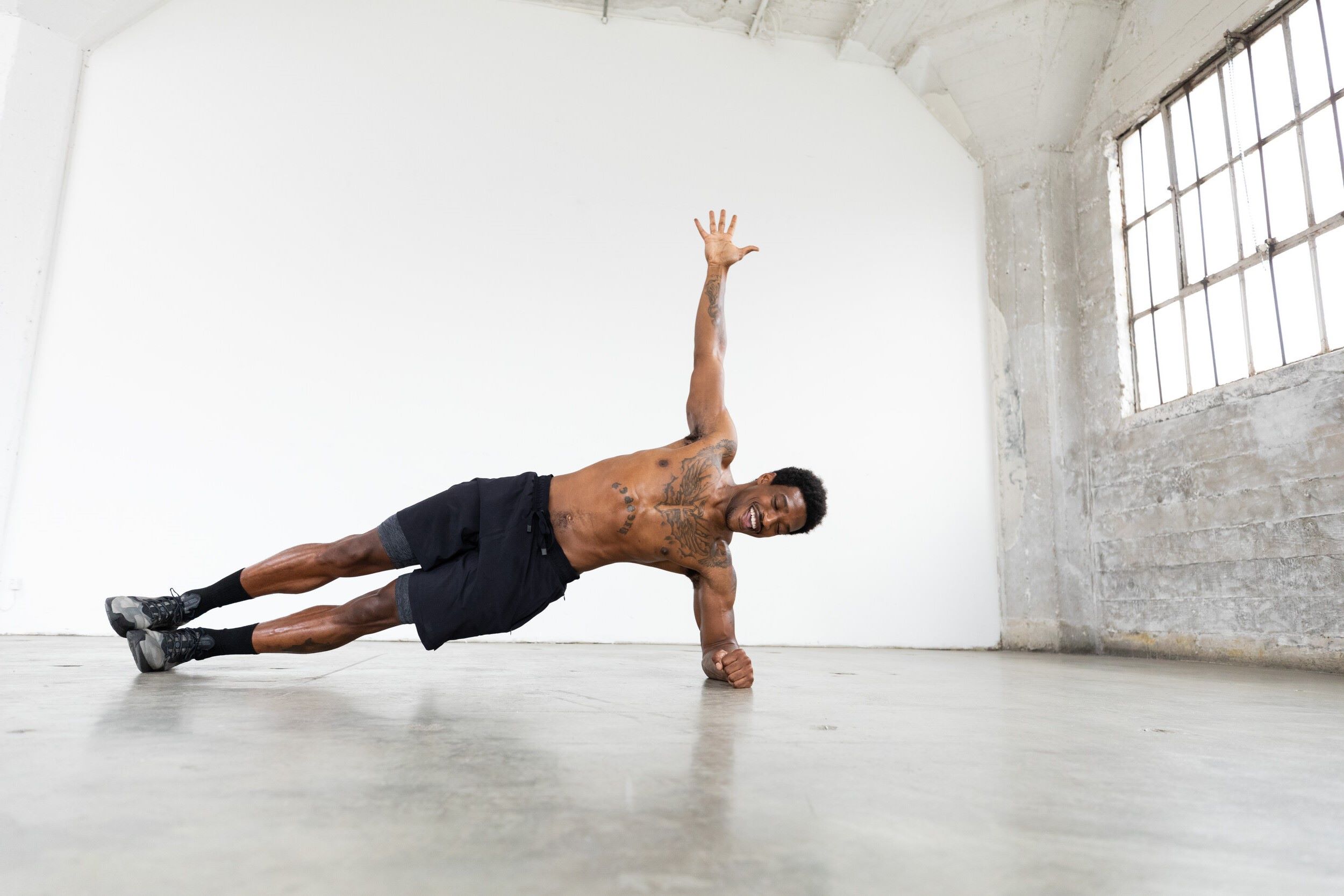

Injury Prevention
The Benefits Of Side Plank For Runners: A Step-by-Step Guide
Published: March 1, 2024
Discover how side planks can help runners prevent injuries with our step-by-step guide. Learn the benefits and proper technique for injury prevention.
(Many of the links in this article redirect to a specific reviewed product. Your purchase of these products through affiliate links helps to generate commission for Therunningadvisor.com, at no extra cost. Learn more)
Table of Contents
Introduction
As a runner, you're no stranger to the importance of staying injury-free. Whether you're a seasoned marathoner or a casual jogger, preventing injuries is crucial for maintaining your running routine and achieving your fitness goals. One effective way to enhance your injury prevention strategy is by incorporating the side plank exercise into your workout regimen. This simple yet powerful exercise offers a myriad of benefits for runners, helping to strengthen key muscle groups and improve overall stability.
In this comprehensive guide, we'll delve into the world of side plank exercises and explore how they can significantly benefit runners. From understanding the mechanics of the side plank to providing a step-by-step guide for proper execution, this article aims to equip you with the knowledge and tools to integrate this exercise seamlessly into your running routine. Additionally, we'll discuss valuable tips for maximizing the benefits of side plank and offer insights into precautions and modifications to ensure safe and effective practice.
By the end of this guide, you'll have a deeper understanding of how the side plank exercise can contribute to your running performance and overall well-being. So, lace up your running shoes and get ready to discover the transformative potential of this deceptively simple yet incredibly impactful exercise.
Understanding the Side Plank Exercise
The side plank is a fundamental bodyweight exercise that targets the core, specifically the obliques, transverse abdominis, and gluteus medius. This static exercise requires maintaining a straight, rigid body position while supporting the body's weight on one forearm and the side of one foot. The primary goal of the side plank is to build strength and stability in the lateral core muscles, which play a crucial role in maintaining proper running form and preventing injuries.
When performing the side plank, the body forms a straight line from the head to the feet, with the hips lifted off the ground. This position engages the core muscles, promoting stability and balance. Additionally, the side plank activates the shoulder muscles, including the deltoids and trapezius, as they work to support the upper body throughout the exercise.
One of the key benefits of the side plank is its ability to target the often-neglected lateral core muscles. These muscles are essential for stabilizing the pelvis and maintaining proper alignment during running, especially when navigating uneven terrain or executing sharp turns. By strengthening the lateral core, runners can improve their overall stability and reduce the risk of common running-related injuries, such as IT band syndrome and hip imbalances.
Furthermore, the side plank promotes muscular endurance, as it requires maintaining the static position for an extended period. This endurance-building aspect is particularly beneficial for runners, as it can contribute to better posture and form during long-distance runs. Additionally, a strong lateral core can enhance running efficiency, allowing for more powerful and controlled movements with each stride.
Understanding the mechanics and benefits of the side plank exercise is essential for runners looking to elevate their training regimen. By incorporating this exercise into their routine, runners can effectively target key muscle groups, improve stability, and reduce the likelihood of sustaining running-related injuries. As we delve deeper into the benefits and execution of the side plank, you'll gain valuable insights into how this exercise can positively impact your running performance.
Benefits of Side Plank for Runners
The side plank exercise offers a multitude of benefits specifically tailored to meet the unique needs of runners. By integrating this exercise into their training routine, runners can experience significant improvements in core strength, stability, and injury prevention. Here's a closer look at the compelling advantages of incorporating side planks into a runner's workout regimen:
-
Enhanced Core Strength: The side plank is renowned for its ability to target the deep core muscles, including the obliques and transverse abdominis. These muscles play a pivotal role in stabilizing the pelvis and spine, essential for maintaining proper running form. A strong core translates to improved posture, reduced energy wastage, and enhanced running efficiency.
-
Improved Lateral Stability: Runners often encounter challenges that demand lateral stability, such as navigating uneven terrain or executing sharp turns. The side plank effectively strengthens the lateral core muscles, promoting better balance and stability during dynamic movements. This enhanced stability can mitigate the risk of ankle sprains and other injuries associated with unstable footing.
-
Injury Prevention: By targeting the often-neglected lateral core muscles, the side plank helps address muscular imbalances that can lead to common running injuries. Strengthening these muscles reduces the risk of IT band syndrome, hip imbalances, and other overuse injuries, thereby supporting long-term running health.
-
Enhanced Endurance: The static nature of the side plank challenges the muscles to maintain a prolonged contraction, promoting muscular endurance. For runners, improved muscular endurance translates to better posture and form during extended runs, ultimately contributing to reduced fatigue and improved performance.
-
Improved Posture and Alignment: A strong lateral core, cultivated through regular side plank practice, contributes to better overall posture and spinal alignment. This is particularly beneficial for runners, as it can help alleviate stress on the lower back and reduce the likelihood of developing running-related back pain.
-
Efficient Breathing Mechanics: Engaging the core muscles during the side plank exercise can facilitate better breathing mechanics for runners. A strong core supports the diaphragm and intercostal muscles, optimizing respiratory function and oxygen intake during intense running sessions.
-
Versatile Cross-Training Exercise: The side plank can be seamlessly integrated into cross-training routines, offering a refreshing alternative to traditional running workouts. By diversifying their training regimen with side planks, runners can target specific muscle groups while giving their joints and connective tissues a well-deserved break from high-impact activities.
In summary, the benefits of incorporating side planks into a runner's training regimen are far-reaching and impactful. From fortifying core strength and stability to mitigating the risk of running-related injuries, this exercise serves as a valuable asset in the pursuit of long-term running success and overall well-being. By embracing the side plank as a staple in their fitness routine, runners can unlock a myriad of advantages that directly contribute to their performance and resilience on the track, trail, or road.
Step-by-Step Guide to Performing Side Plank
Performing a side plank with proper form is essential to maximize its benefits and minimize the risk of injury. Follow these step-by-step instructions to execute the side plank effectively:
-
Starting Position: Begin by lying on your side with your legs extended and feet stacked on top of each other. Ensure your elbow is directly beneath your shoulder, forming a 90-degree angle, and place your opposite hand on your hip or extend it toward the ceiling for added stability.
-
Engage Your Core: Initiate the movement by engaging your core muscles, specifically the obliques and transverse abdominis. This activation provides the foundation for the exercise and helps stabilize your body throughout the movement.
-
Lift Your Hips: Press through your forearm and outer edge of your bottom foot to lift your hips off the ground, creating a straight line from your head to your feet. Focus on maintaining proper alignment, with your body forming a diagonal plank position.
-
Maintain Alignment: Ensure your head is in line with your spine, and your neck is neutral. Avoid allowing your hips to sag or rotate backward, as this can compromise the effectiveness of the exercise and increase the risk of strain.
-
Hold and Breathe: Aim to hold the side plank position for 20-30 seconds initially, gradually increasing the duration as your strength improves. Focus on steady breathing throughout the exercise, inhaling and exhaling deeply to support muscular engagement and stability.
-
Switch Sides: After holding the side plank on one side, gently lower your hips to the ground and transition to the opposite side to work the muscles evenly.
-
Repeat and Progress: Incorporate multiple sets of side planks into your routine, aiming for 2-3 sets on each side. As your strength and endurance improve, challenge yourself by extending the duration of each hold or exploring variations, such as lifting the top leg or incorporating dynamic movements.
By following these step-by-step instructions and maintaining proper form, you can effectively perform the side plank to target the lateral core muscles and reap its full benefits. Consistent practice and gradual progression will contribute to enhanced core strength, stability, and injury prevention, empowering you to elevate your running performance and overall fitness level.
Tips for Incorporating Side Plank into Your Running Routine
Incorporating the side plank exercise into your running routine can significantly enhance your overall strength, stability, and resilience. To seamlessly integrate this impactful exercise into your training regimen, consider the following tips:
-
Strategic Timing: Choose the most suitable time to perform side planks in relation to your running sessions. While some runners prefer to include them as part of their pre-run warm-up to activate core muscles and prime the body for optimal performance, others find post-run incorporation beneficial for targeting fatigued muscles and promoting recovery. Experiment with different timings to determine what works best for your body and training goals.
-
Frequency and Consistency: Aim to incorporate side planks into your routine at least 2-3 times per week to experience noticeable improvements in core strength and stability. Consistency is key, so establish a regular schedule for performing side planks and treat them as an essential component of your overall training plan.
-
Variety and Progression: Explore variations of the side plank to keep your routine engaging and challenging. Consider lifting the top leg, incorporating hip dips, or utilizing stability balls to add an extra dimension to the exercise. Additionally, progressively increase the duration of each hold or the number of sets as your strength and endurance improve, ensuring continuous progression.
-
Integrate with Cross-Training: Embrace the versatility of the side plank by integrating it into your cross-training activities. Whether it's during a yoga session, strength training workout, or recovery routine, incorporating side planks into diverse training modalities can provide a well-rounded approach to strengthening your core and supporting your running performance.
-
Mindful Execution: Focus on maintaining proper form and alignment throughout each side plank repetition. Mindful execution not only maximizes the effectiveness of the exercise but also reduces the risk of injury. Pay attention to your body positioning, engage your core muscles, and breathe steadily to optimize the benefits of each plank hold.
-
Pair with Complementary Exercises: Combine side planks with complementary exercises that target different aspects of core strength and stability. Incorporating exercises such as planks, bird dogs, and Russian twists can create a comprehensive core strengthening routine that complements the benefits of the side plank.
-
Listen to Your Body: Pay attention to how your body responds to the incorporation of side planks into your running routine. If you experience any discomfort or excessive fatigue, consider adjusting the frequency, duration, or intensity of the exercise to align with your body's needs and recovery capacity.
By implementing these tips, you can seamlessly integrate the side plank exercise into your running routine, unlocking its full potential to enhance core strength, stability, and injury prevention. As you cultivate a balanced and purposeful approach to incorporating side planks, you'll empower yourself to elevate your running performance and overall fitness level.
Precautions and Modifications for Side Plank Exercise
While the side plank exercise offers numerous benefits for runners, it's essential to approach it with mindfulness and awareness of individual capabilities. Incorporating precautions and modifications into your side plank practice can help mitigate the risk of strain or injury while ensuring that the exercise remains accessible and effective for individuals at varying fitness levels. Here are valuable precautions and modifications to consider when integrating the side plank into your workout routine:
Precautions:
-
Avoid Overexertion: As with any exercise, it's crucial to avoid pushing your body beyond its limits. Overexertion during the side plank can lead to muscle strain or undue stress on the joints. Listen to your body's cues and gradually increase the intensity and duration of the exercise to prevent overexertion.
-
Maintain Proper Alignment: Improper alignment during the side plank can compromise its effectiveness and increase the risk of injury. Ensure that your body forms a straight line from head to feet, with the hips lifted and the core engaged. Avoid allowing the hips to sag or rotate backward, as this can place undue strain on the lower back and diminish the exercise's benefits.
-
Respect Individual Limitations: Individuals with pre-existing wrist, shoulder, or lower back issues should approach the side plank with caution. If you experience discomfort or pain in these areas during the exercise, consider modifying the position or seeking guidance from a fitness professional to ensure safe and effective practice.
-
Gradual Progression: While it's natural to strive for continuous improvement, it's essential to progress gradually with the side plank. Rushing into advanced variations or prolonged holds can increase the risk of strain or injury. Focus on steady progression and allow your body to adapt to increasing demands over time.
Modifications:
-
Knee-Supported Side Plank: For individuals who are new to the side plank or are working on building foundational strength, a knee-supported variation can provide a more accessible starting point. By positioning the bottom knee on the ground while lifting the hips and maintaining a straight line from head to knees, individuals can gradually build core strength and stability before progressing to the traditional side plank.
-
Forearm Support: If wrist discomfort or instability is a concern, consider performing the side plank on the forearm instead of the extended arm. This modification can alleviate pressure on the wrists while still effectively engaging the core and stabilizing muscles.
-
Reduced Hold Duration: Initially, individuals can reduce the duration of each side plank hold to accommodate their current fitness level. Starting with shorter holds, such as 10-15 seconds, allows for a gradual and safe progression toward longer holds as strength and endurance improve.
-
Elevated Surface: Utilizing an elevated surface, such as a bench or sturdy platform, can reduce the intensity of the side plank while still providing a challenging core workout. By adjusting the angle of the body, individuals can tailor the exercise to their current abilities and gradually progress to the traditional floor-based side plank.
By incorporating these precautions and modifications, individuals can approach the side plank exercise with attentiveness to their body's needs and capabilities. This mindful approach not only reduces the risk of injury but also ensures that the exercise remains inclusive and adaptable for individuals at various fitness levels and with diverse physical considerations. As you navigate your side plank practice, prioritize safety, gradual progression, and personalized adjustments to optimize the benefits of this impactful exercise.
Conclusion
In conclusion, the side plank exercise stands as a formidable ally for runners seeking to fortify their core strength, enhance stability, and safeguard against common running-related injuries. By delving into the mechanics and benefits of the side plank, we've uncovered its profound impact on the lateral core muscles, muscular endurance, and overall running performance. Through a step-by-step guide, we've provided a roadmap for executing the side plank with precision and purpose, ensuring that runners can harness its full potential.
As runners embrace the side plank as a staple in their training regimen, they open the door to a myriad of benefits that extend far beyond the confines of the exercise mat. From enhanced core strength and improved lateral stability to the invaluable support in injury prevention, the side plank emerges as a transformative tool for elevating running performance and long-term well-being.
Moreover, the integration of side planks into a runner's routine is not merely a matter of physical exertion; it represents a commitment to holistic fitness and proactive injury prevention. By incorporating strategic timing, frequency, and mindful execution, runners can seamlessly weave the side plank into their training routine, reaping the rewards of a stronger, more resilient core.
The journey of incorporating side planks into a running routine is not without its considerations. By embracing precautions, modifications, and a mindful approach to progression, runners can navigate their side plank practice with confidence and adaptability, ensuring that the exercise remains accessible and effective for individuals at varying fitness levels and physical conditions.
Ultimately, the side plank transcends its identity as a static exercise; it becomes a symbol of resilience, determination, and the unwavering commitment to running longevity. As runners embrace the side plank, they embark on a transformative journey toward enhanced core strength, stability, and injury resilience, empowering them to conquer new milestones and embrace the joy of running with confidence and vitality.
In the grand tapestry of running, the side plank emerges as a steadfast companion, offering its steadfast support to runners as they navigate the twists and turns of their fitness journey. With each deliberate hold and every incremental progression, the side plank becomes a testament to the unwavering dedication to running excellence and the enduring pursuit of a stronger, more resilient self.

